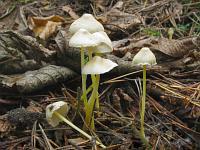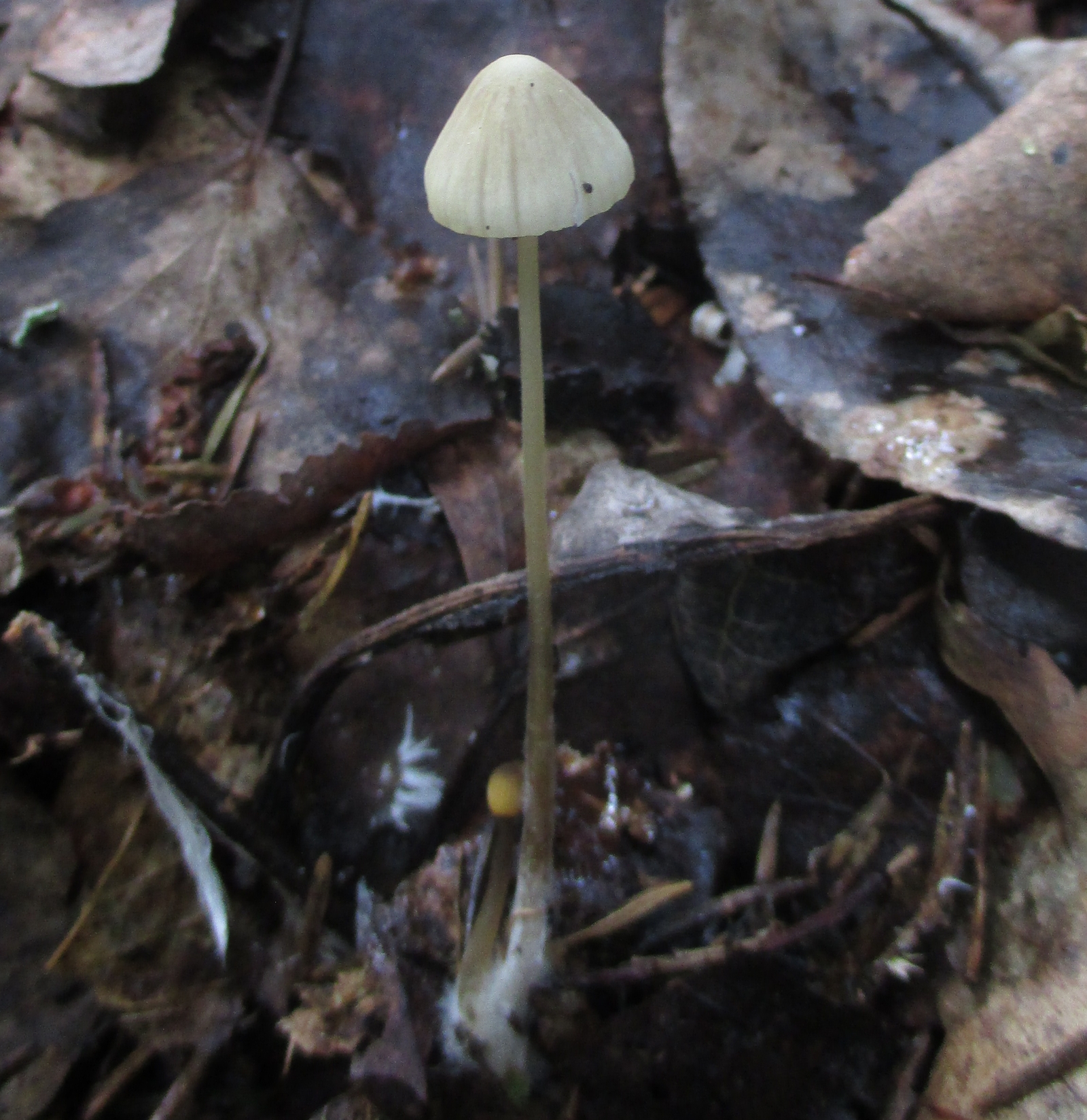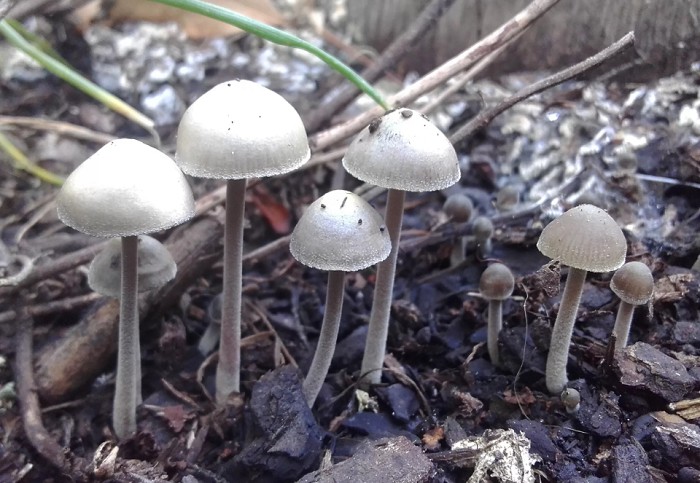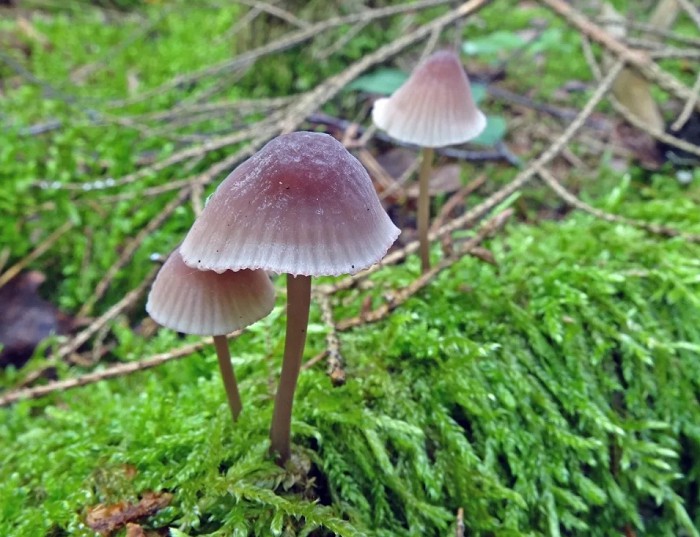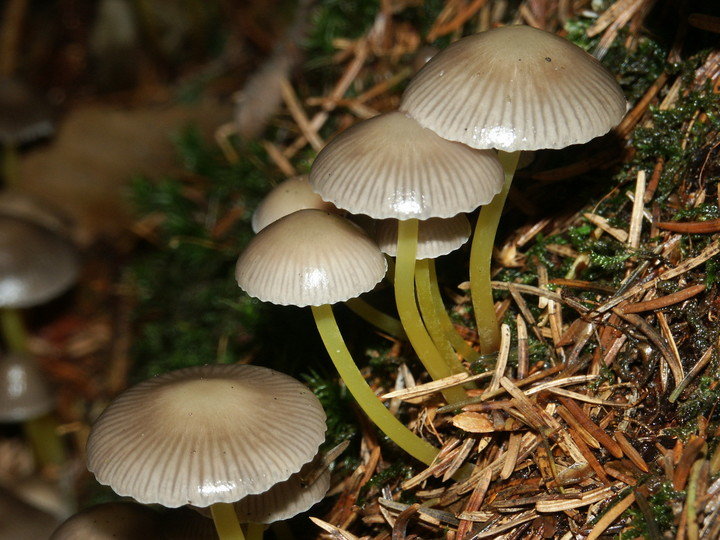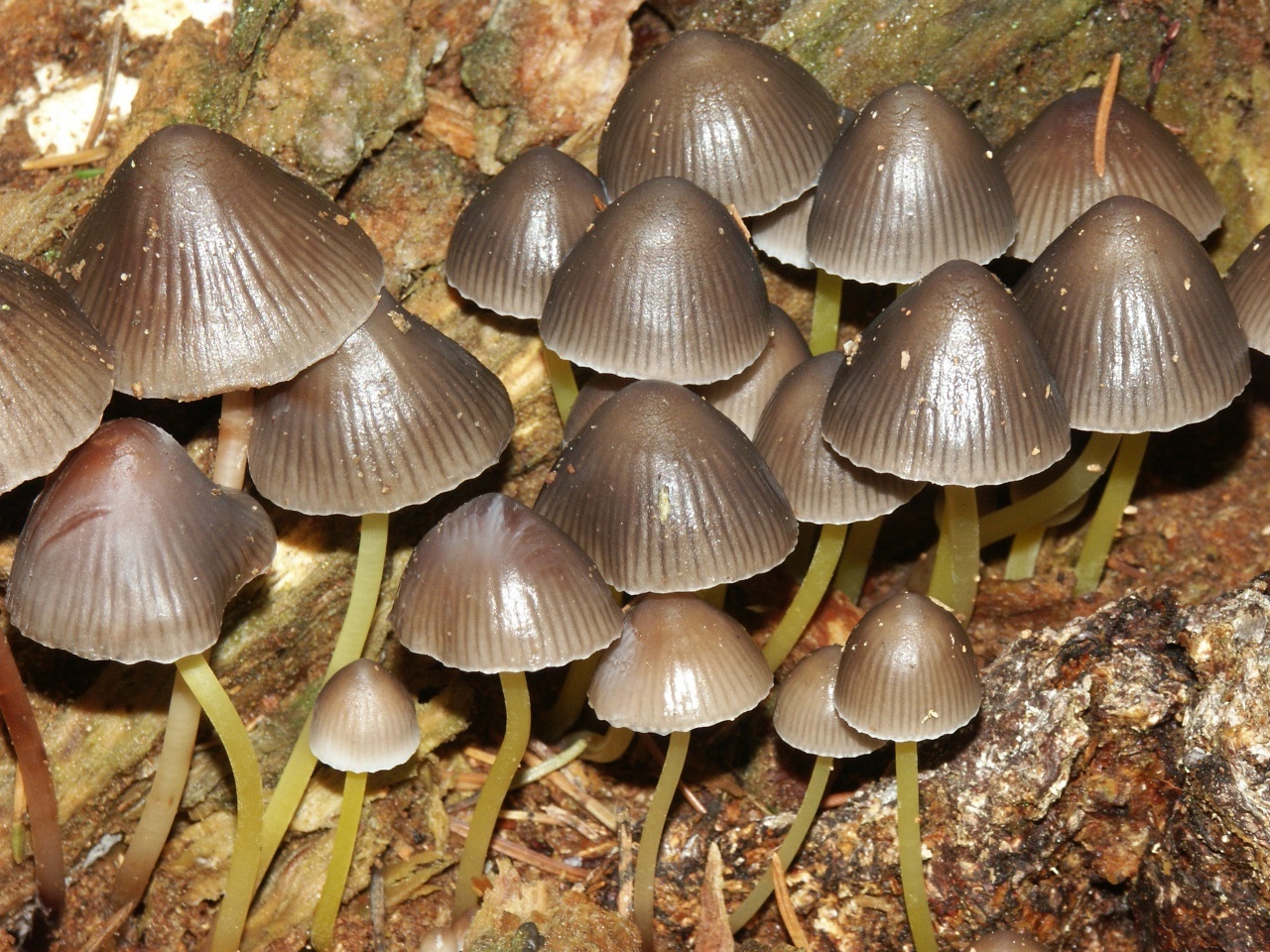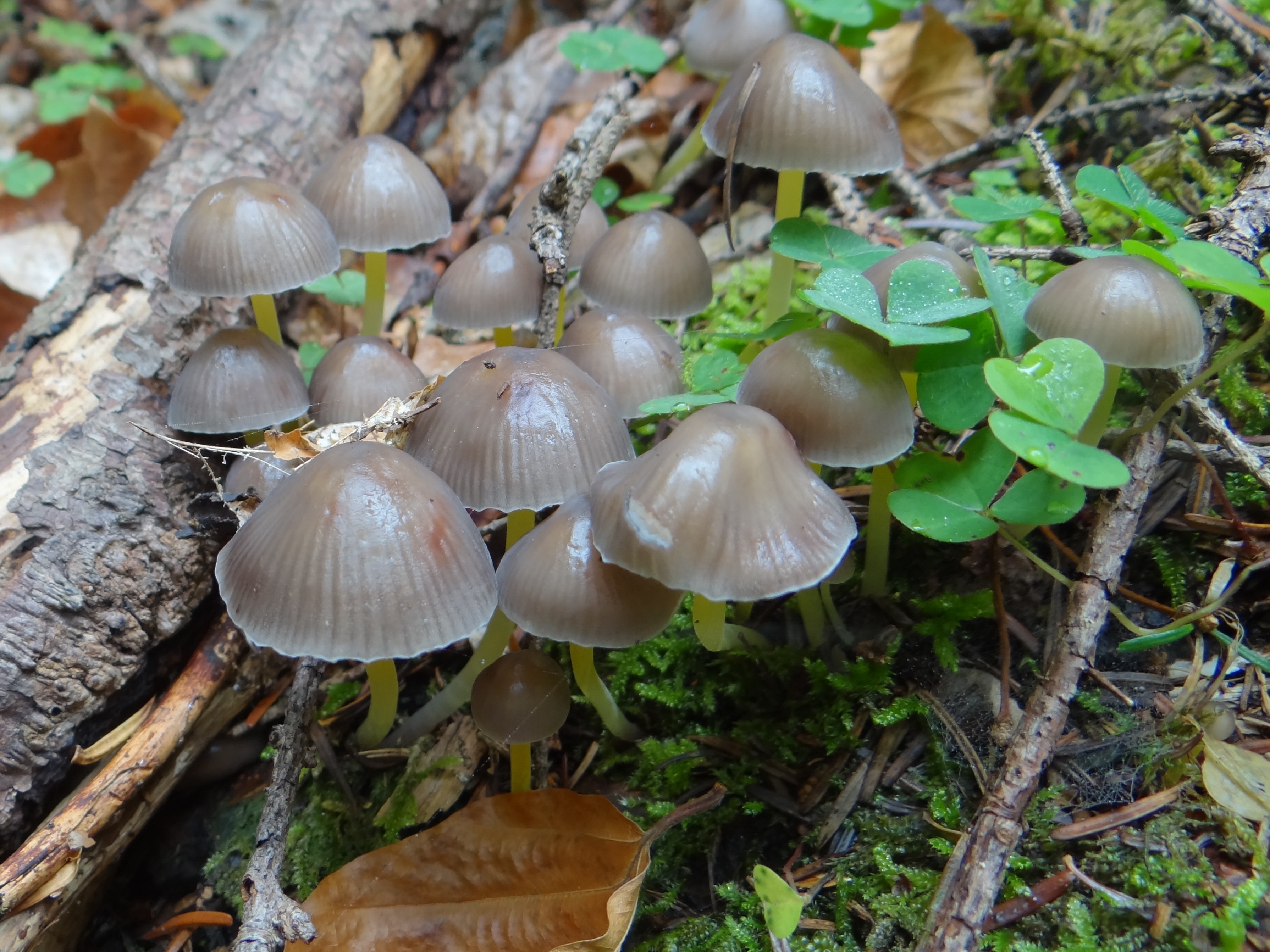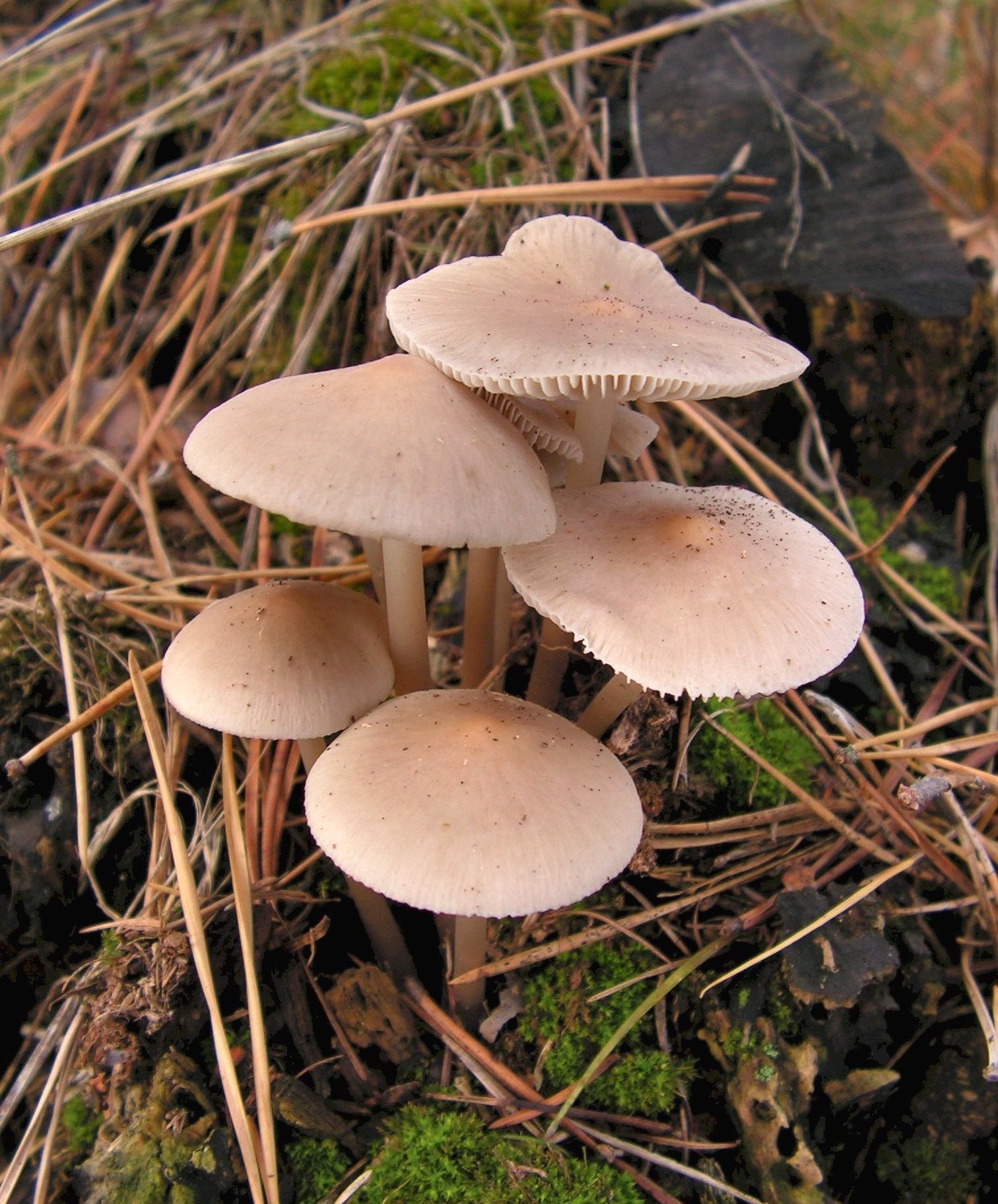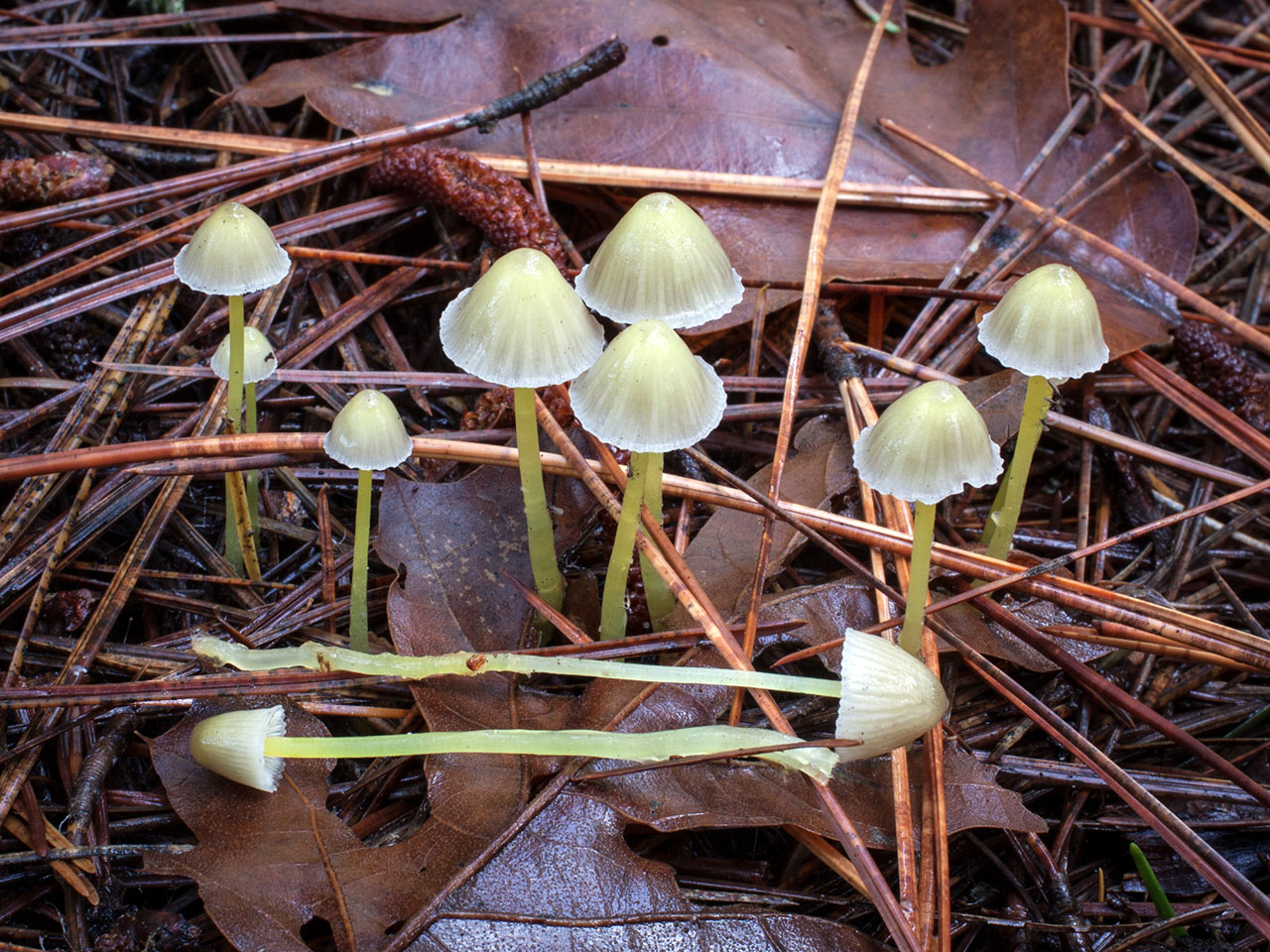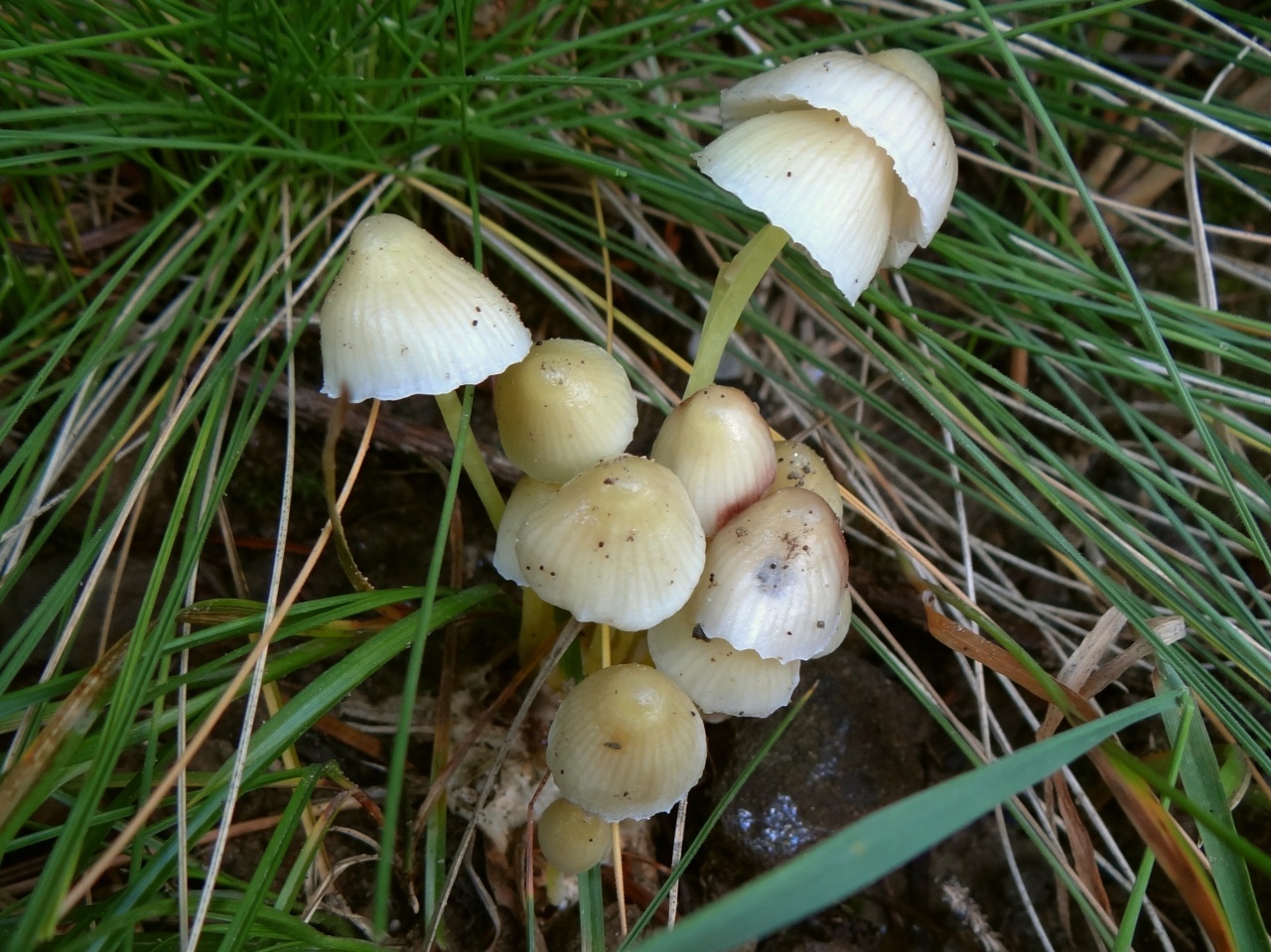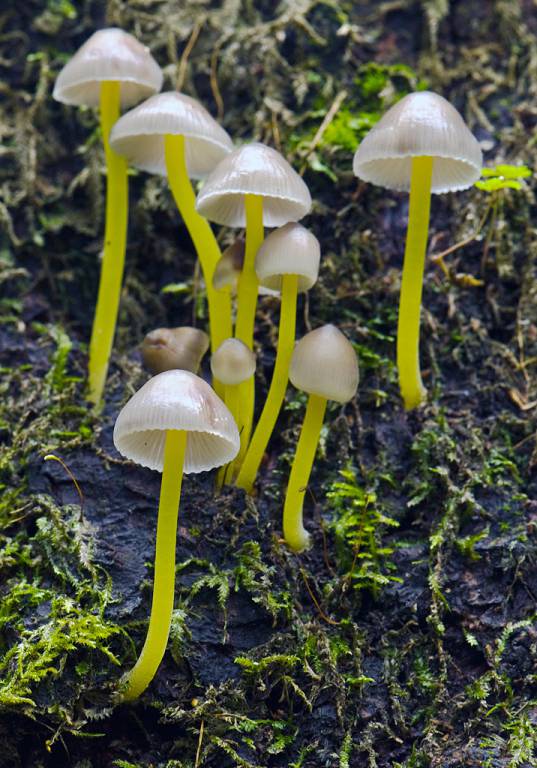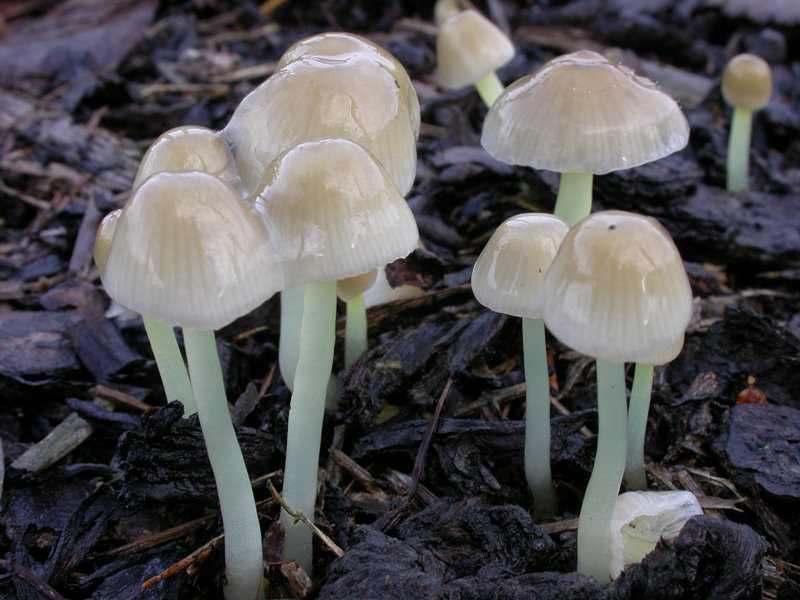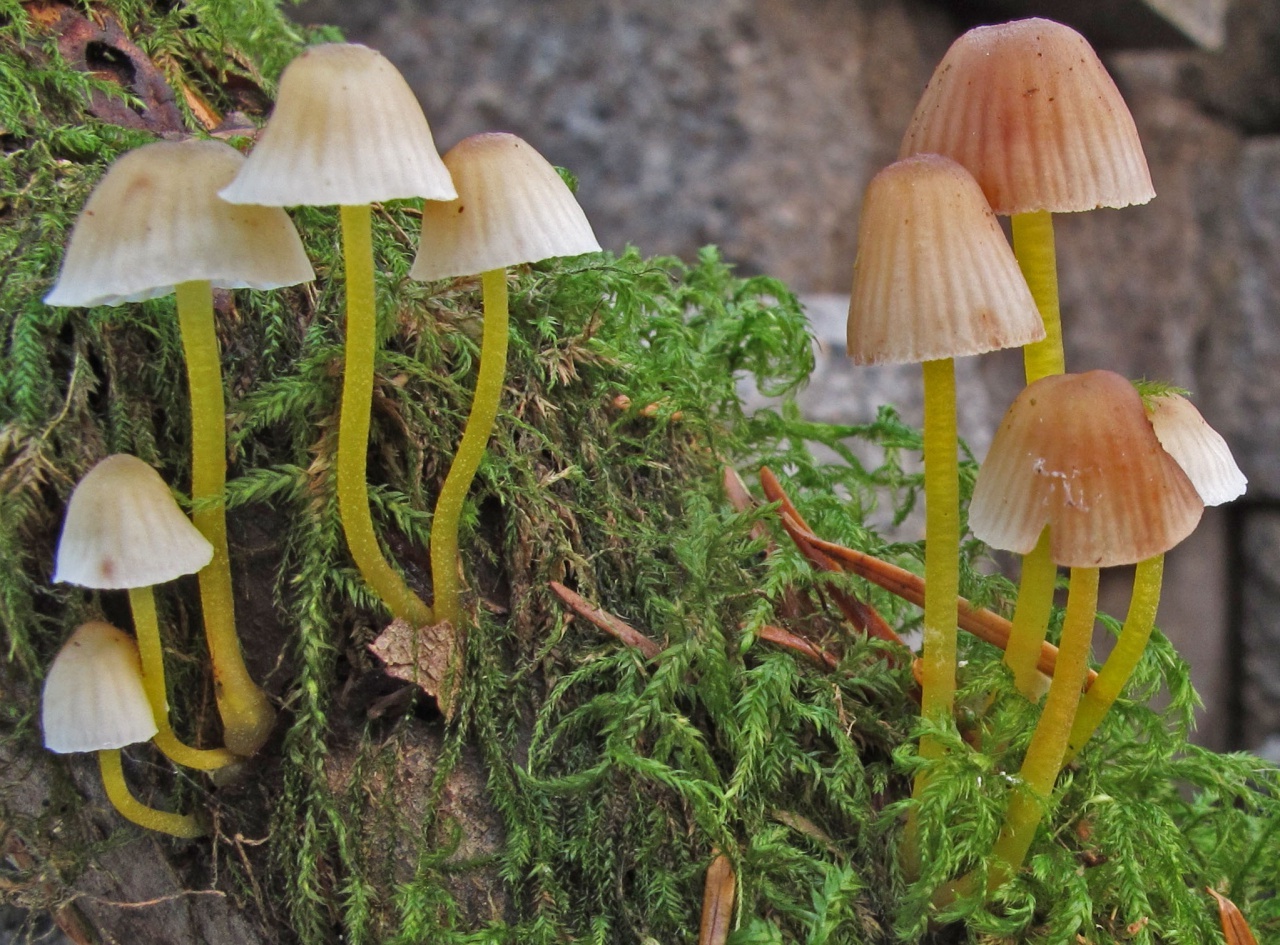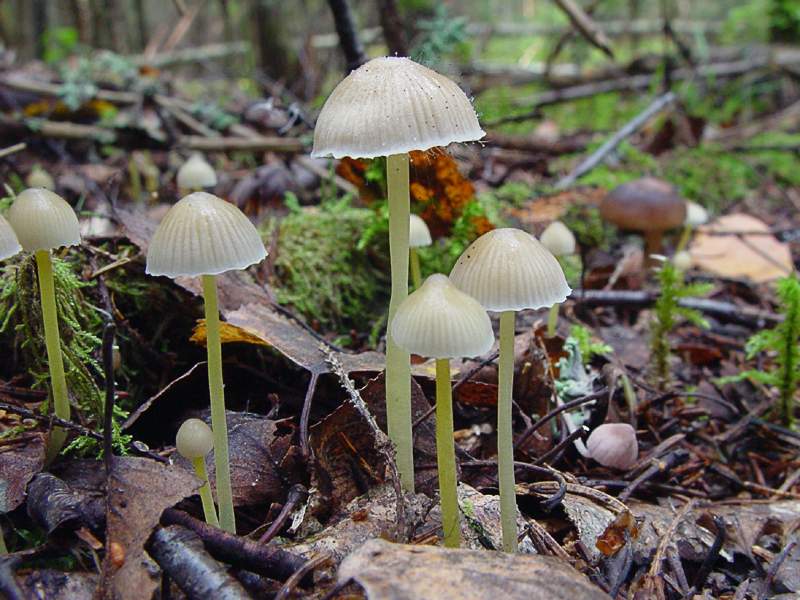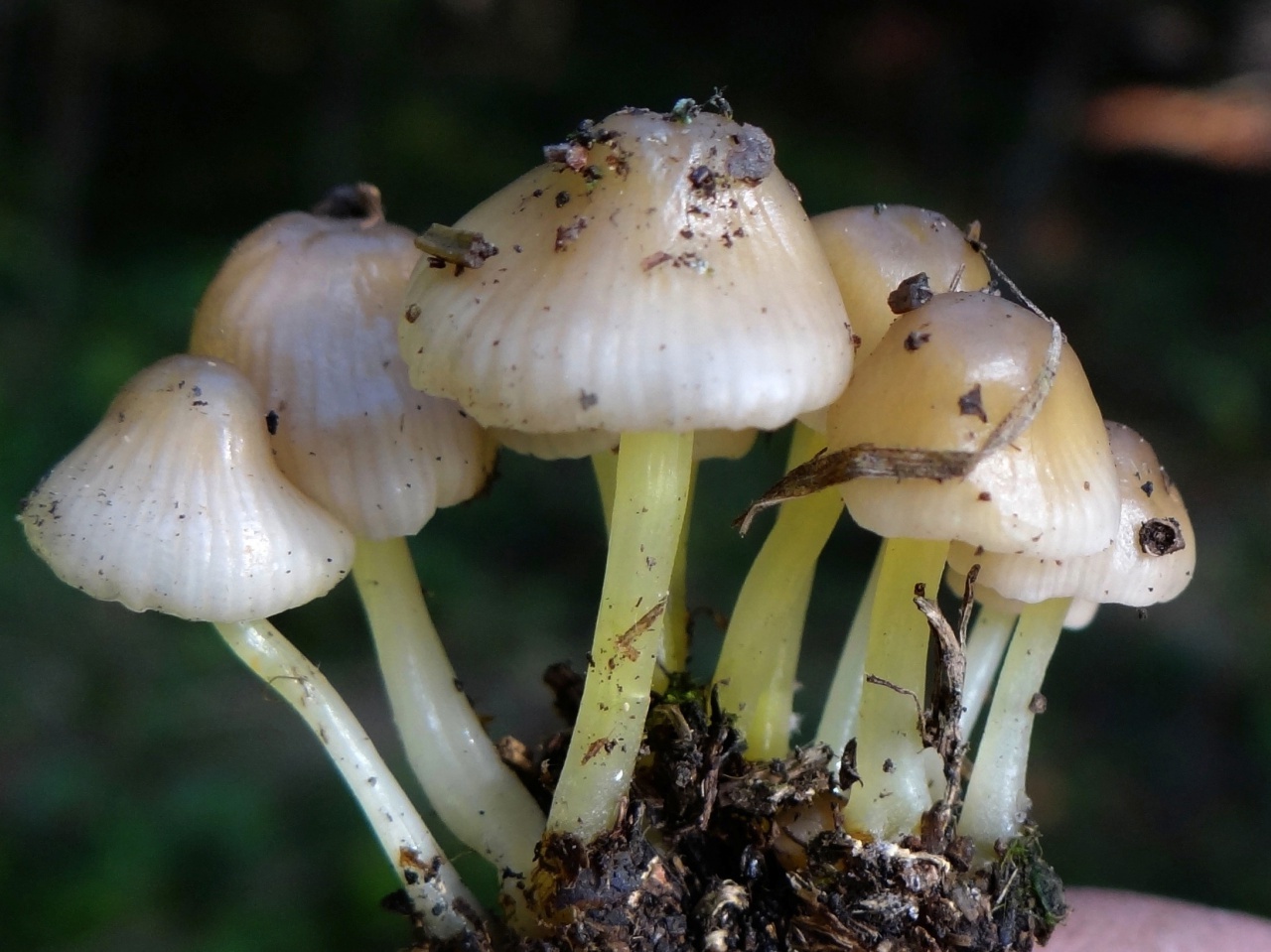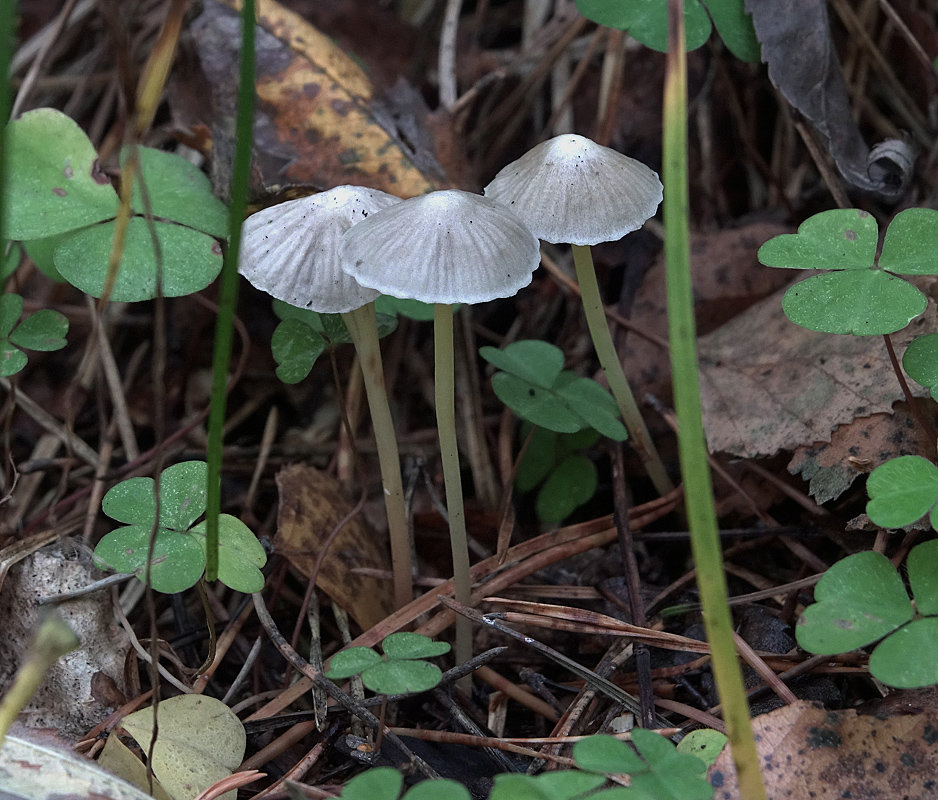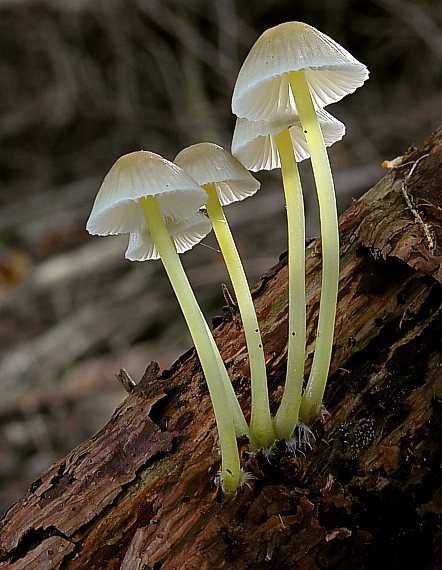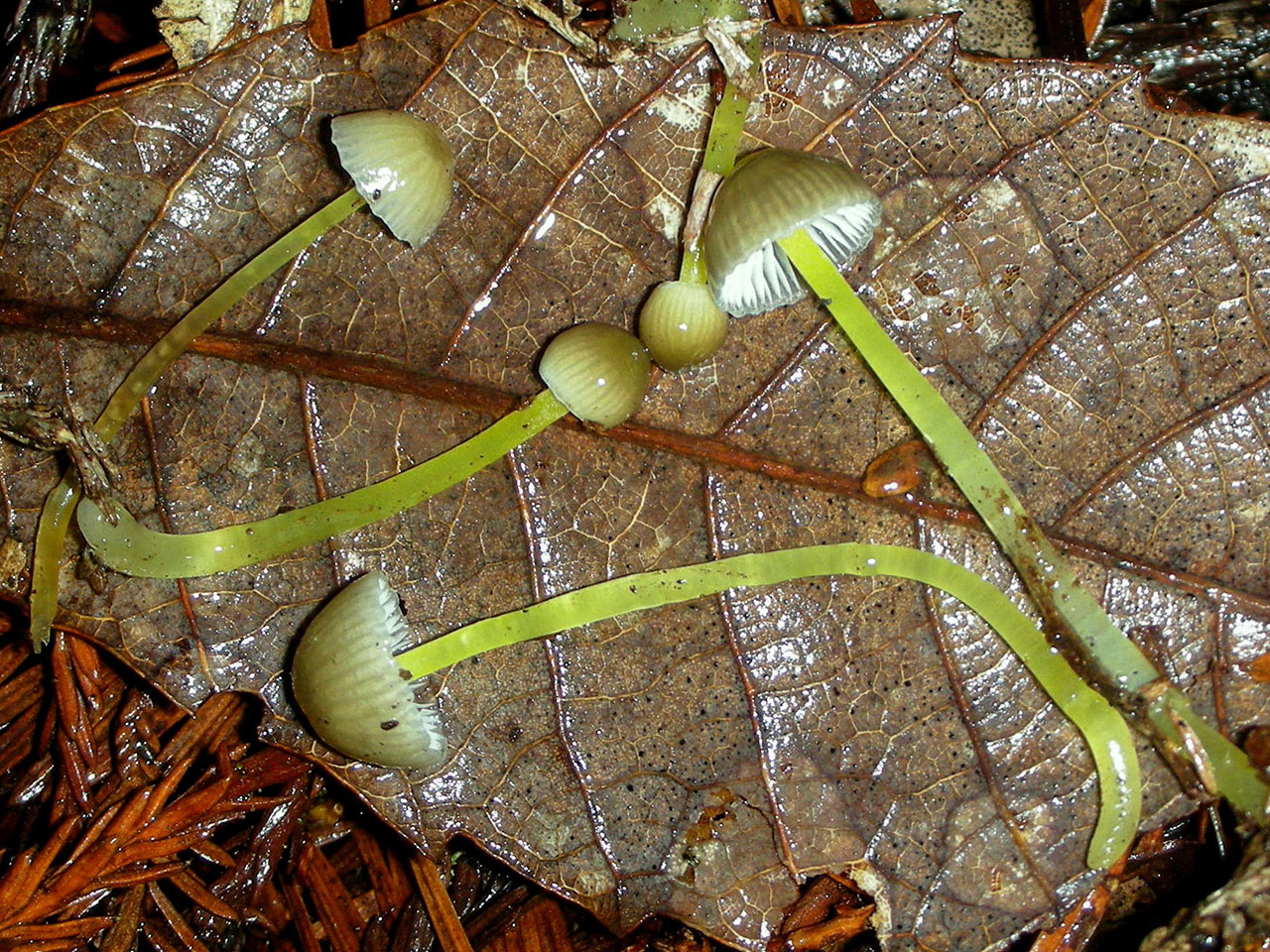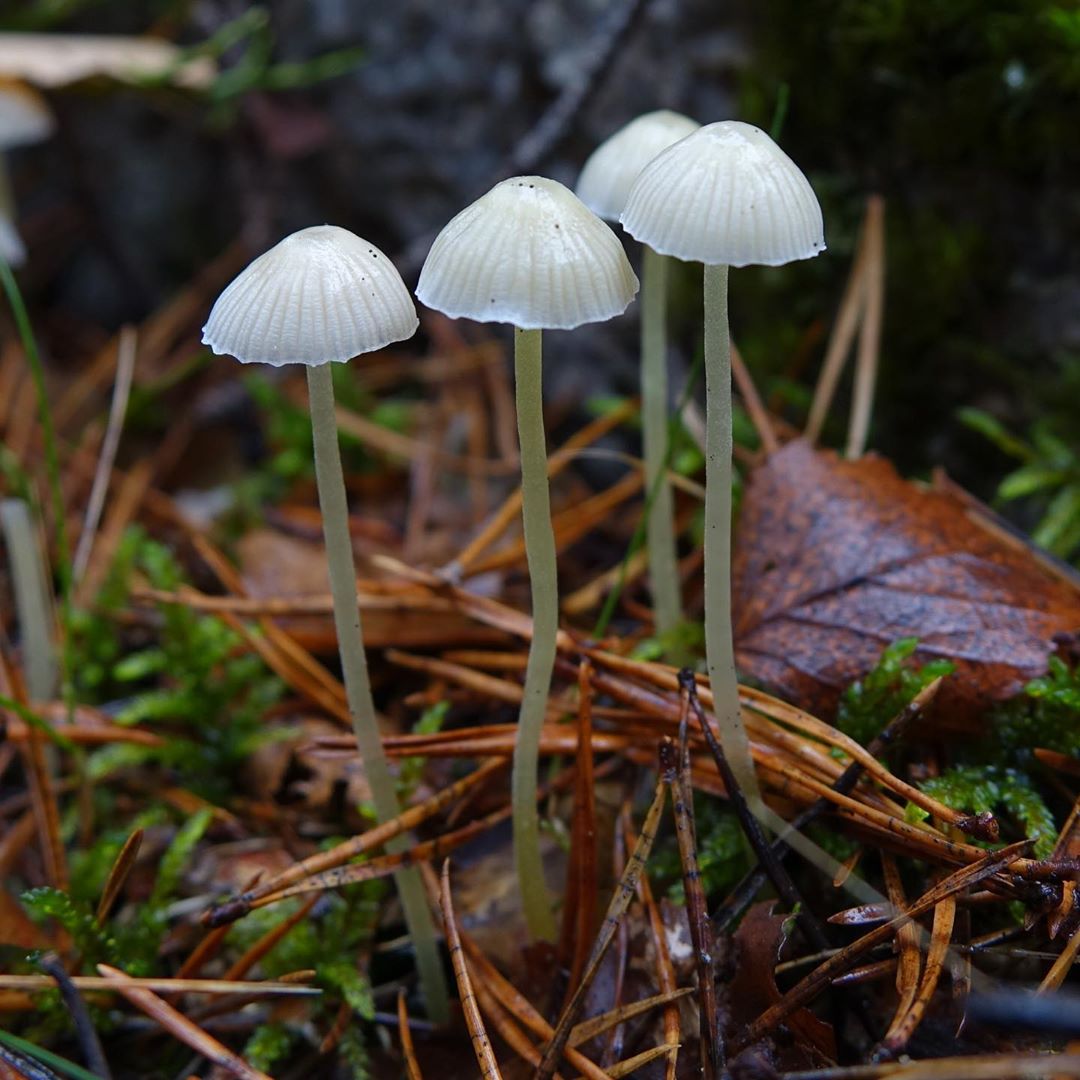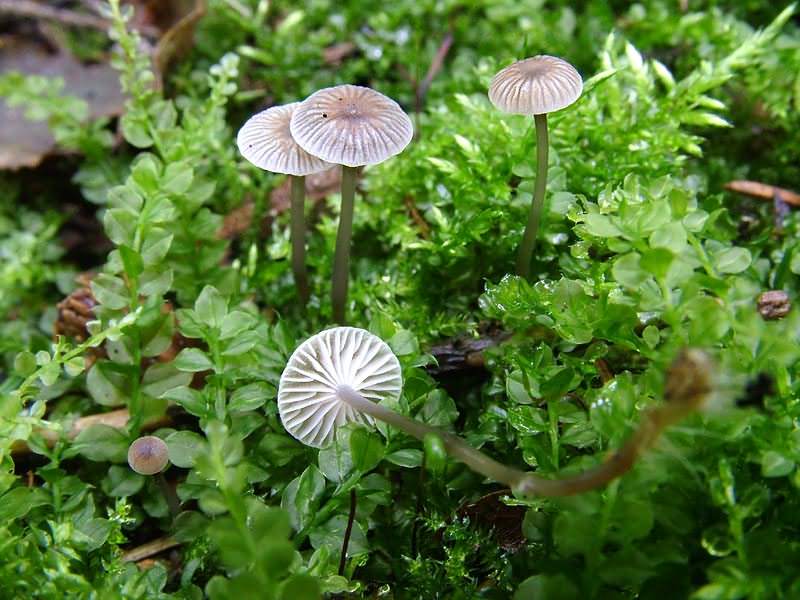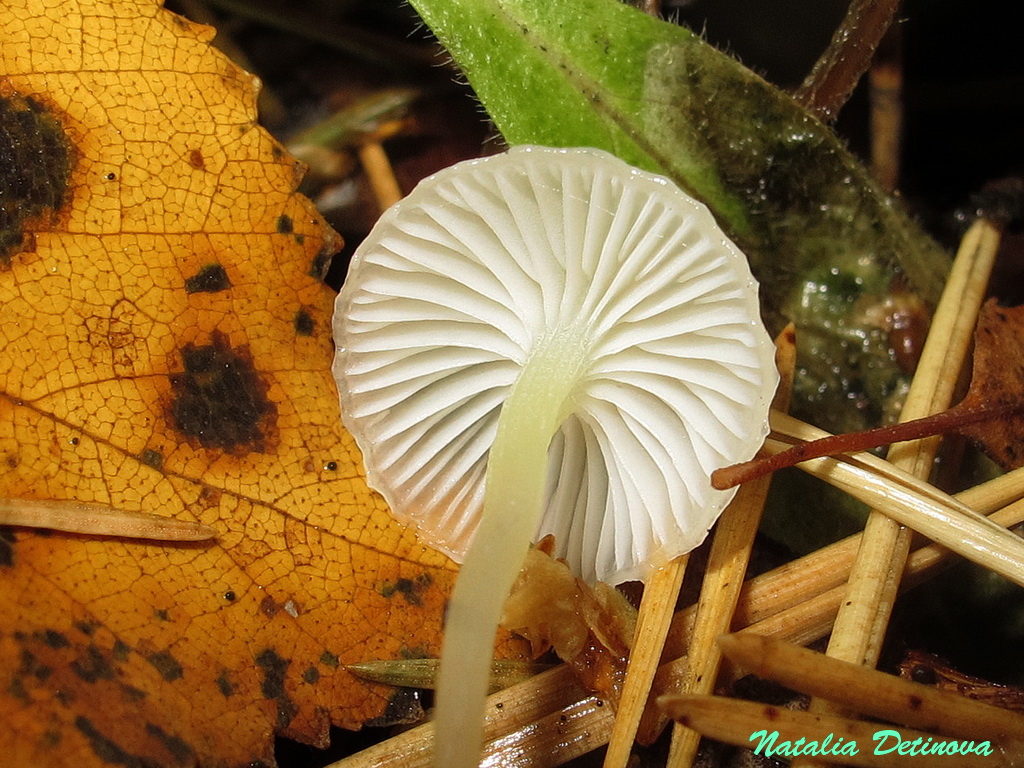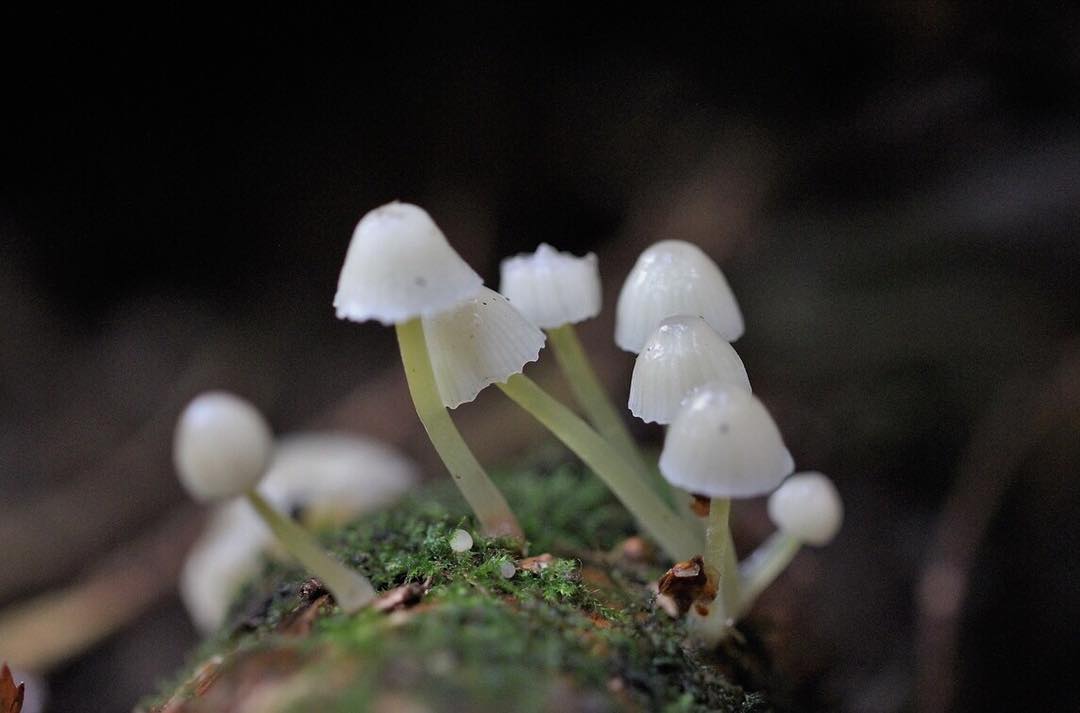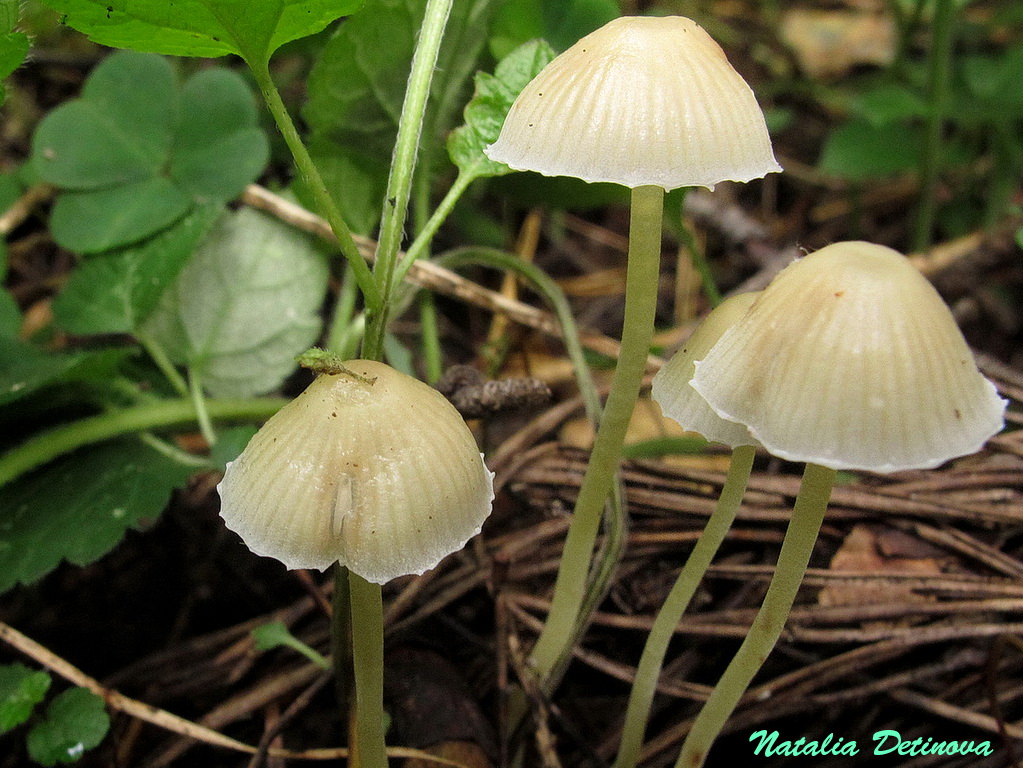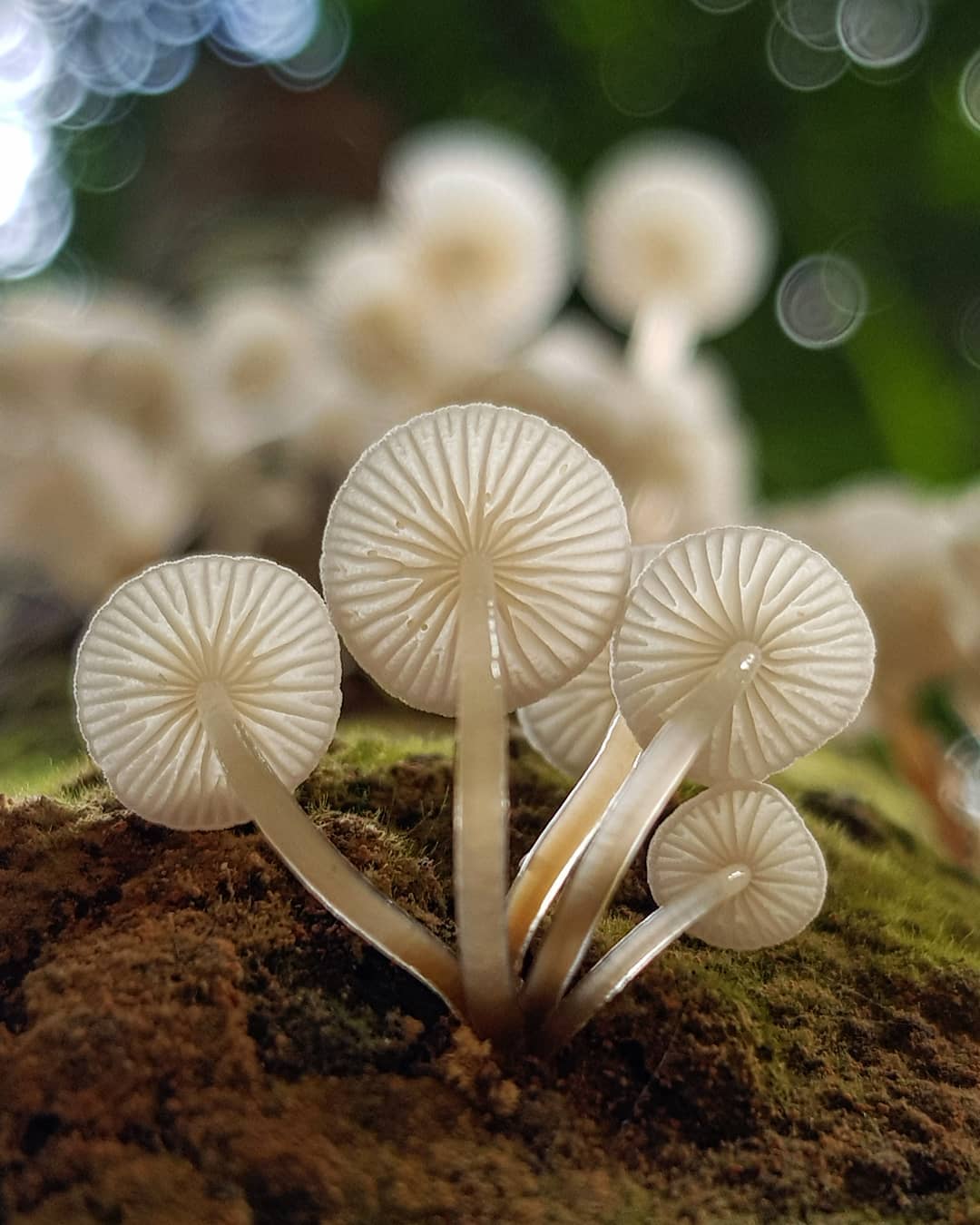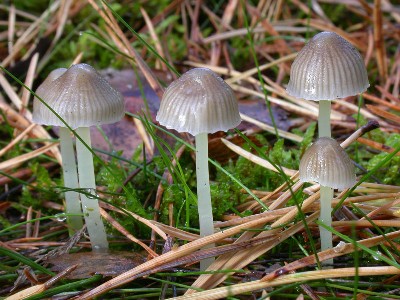Features of the classification
The genus Mycena includes approximately 200 species. According to the researchers, the main classification criteria are the size of the specimen and the level of concentration of the poison in it. Some mycene contain alkaloids, which can provoke vomiting, diarrhea, visual impairment, increased emotionality.
The most popular representatives of the genus
The following types are of the greatest interest to scientists:
- Mycena pura (pure). This variety is found in deciduous forests, among moss, rarely on spruce wood. Can grow in groups or singly. Belongs to the category of weakly poisonous and weakly hallucinogenic eukaryotes, has an unpleasant odor. In France, Norway, Denmark and Latvia, the species is listed in the Red Book.
- Mycena viscosa (sticky). It grows mainly in spruce coniferous forests, on coniferous or deciduous litter, stumps, near tree roots. The fruiting period is from May to September. Grows in small colonies, found in the European part of Russia, Primorye, some European countries. An immature mushroom has a grayish brown tint. A mature eukaryote has a lemon-yellow leg and a cap with small red-brown spots. This species does not contain toxic components, but is classified as inedible due to a putrid odor.
- Mycena rosea (pink). Eukaryotes are found in deciduous and mixed forests, among fallen leaves. The fruiting body of the fungus is pink, which in the central part acquires a fawn hue. Can grow singly or in small groups. This variety contains the poisonous substance muscarine, the use of which in large doses can be fatal.
- Mycena cyanorrhiza (blue-footed). Grows in coniferous and mixed forests, on bark, rotten wood. Fruiting from June to September. It belongs to rare species. Contains the poisonous element psilocybin.
- Mycena vulgaris (common). It is found in mixed, coniferous forests, in the middle of the litter of needles. Inhabits European territory, North America, Asian countries. This species is not poisonous. However, in some cases, it is considered inedible due to its small size, as this makes processing difficult after collection.
- Mycena Chlorophos (chlorophos). Prefers a tropical climate, moist or humus soil. Can be found in Australia, South America, Asia. The species has a gray tint, which changes to pale green in the dark.
mycene blue-footed - is a rare representative of the genus mycena
Description of the inedible mushroom
Inedible eukaryotes of the genus Mycena differ in appearance. For example, the mushroom Mycena pink is characterized by a smooth surface of the cap, the diameter of which is 3-6 cm. In immature eukaryotes, the cap is bell-shaped with a tubercle in the center. When ripe, it becomes more convex or outstretched. The leg has the shape of a cylinder, its length does not exceed 10 cm. The pulp of this species is distinguished by its white color, a pronounced radish smell.
Mycenae is pure by description and resembles a pink eukaryote. However, the surface of its cap is slightly slimy, has a gray-brown tint with a darker center. The leg is cylindrical with a smooth surface, its length is up to 9 cm. The pulp is characterized by wateriness, a gray tint, and the presence of a rare odor.
mycena milk belongs to the edible representatives of the genus
Edible mushrooms
Edible eukaryotes include Mycena galopus (milk). The hat of this type is bell-shaped or cone-shaped, 1-2.5 cm in diameter, the color is gray or gray-brown. The leg reaches a height of 5-9 cm, has a cylindrical shape. The pulp has a mild taste, the smell may be weak, rare or absent. Found in all types of forests. Some experts do not recommend eating this species. When harvesting, it can easily be confused with poisonous mycens.
Mycena epipterygia (Scop.) Gray
Nat. Arrang. Br. pl. I: 619 (1821).
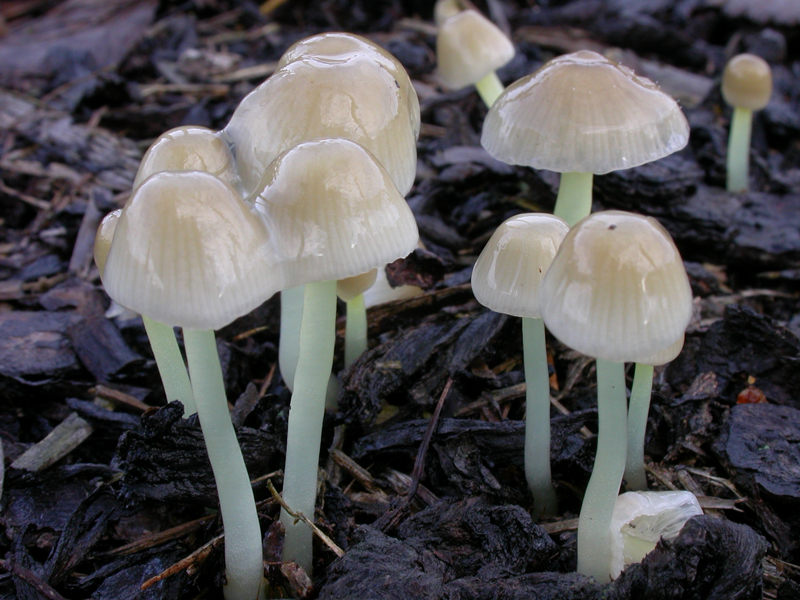
A. Aronsen 2006
|
Growing in various habitats. On mossy lawns, Pileus 5-25 mm across, parabolical or conical to campanulate, flattening with age, shallowly sulcate, translucent-striate, at first pruinose, then viscid, covered with a completely separable, tough, gelatinous pellicle, pale grayish citrine, yellowish gray, greenish yellow, olivaceous yellow, greenish brown, pale gray-brown, olive brown, pale sepia brown, dark red-brown, black-brown, but also whitish or with some purplish, olivaceous or citrine shade, the margin more or less scalloped, concolorous to somewhat paler. Odor indistinctive, faintly fragrant to farinaceous or disagreeable and rancid when cut. Lamellae 17-23 reaching the stipe, ascending, narrowly to broadly adnate, decurrent with a tooth, smooth to somewhat ribbed, at first whitish to very pale citrine, turning very pale grayish, not infrequently becoming flushed with a more or less pronounced pink shade , sometimes becoming stained with reddish brown spots, the edge gelatinized, separable as a tough, elastic thread, concolorous. Stipe 45-80 x 1-2 mm, hollow, somewhat elastic to fragile, equal, terete, straight to curved or flexuous, smooth, viscid, minutely puberulous above, at first citrine or greenish yellow, gradually turning pale yellow to pale grayish or whitish, at times reddening with age, the base covered with long, coarse, white fibrils. Basidia (22-) 27-35 x 7-10 µm, clavate, generally 4-spored but also 2-spored, with sterigmata up to 7 µm long. Spores 8-11 x 4.5-8 µm (in 2-spored forms 9-13.5 x 7-8 µm), Q = 1.8-2.2, Qav = 2, pip-shaped to broadly pip-shaped, smooth, amyloid. Cheilocystidia 12.5-55 x 4.5-10 µm forming a sterile band, embedded in gelatinous matter, clavate, covered with fairly few, unevenly spaced, rather coarse, simple to furcated or branched, cylindrical to somewhat inflated excrescences 2-14.5 x 1-4.5 µm. Pleurocystidia absent. Lamellar trama dextrinoid. Hyphae of the pileipellis 1-3.5 µm wide, embedded in gelatinous matter, branched, anastomosing, covered with simple to furcated or branched excrescences 1-10 x 1-2.5 µm, terminal cells up to 6.5 µm wide. Hyphae of the cortical layer of the stipe 1-3.5 µm wide, embedded in gelatinous matter, smooth or very sparsely covered with cylindrical excrescences 1-7 x 1-2.5 µm, terminal cells 4-8 µm wide, subcylindrical or clavate, covered with a few to more numerous rather coarse excrescences. Clamp connections present in all tissues. Mycena epipterygia is the only species in Mycena sect. Hygrocyboideae (Fr.) Singer. This species is highly variable and probably comprises several cryptospecies that may be hard to segregate morphologically. Maas Geesteranus (1992) recognized 12 varieties. Only four of these are treated here: var. epipterygia, var. badiceps, var. pelliculosa and var. viscosa. In a recent study Perry & Desjardin (2016) compared ITS sequence data of M. epipterygia from California, Washington, Tennessee, British Columbia, Italy and Sweden. They found pairwise differences between these sequences of 0% -10.3%, "suggesting that the taxon is highly variable for this marker and likely represents multiple cryptic taxa at the species level". Further images on the Internet: |
Views
|
|

